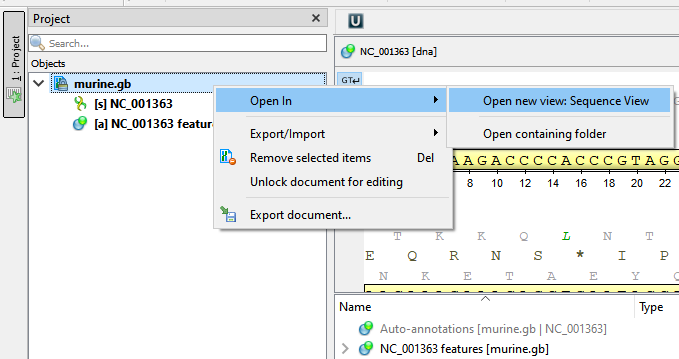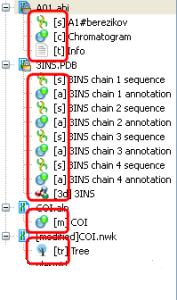Using Objects and Object Views
The document always contains one or more objects. An object is structured biological data that can be visualized by different Object Views.
A single Object View can visualize one or several objects of different types. For example, a single view can show a sequence, annotations for the sequence, a 3D model for a part of the sequence, or its chromatogram simultaneously.
The type of an object is indicated by the symbol in square brackets and the icon near the object:

Below is a list of object types supported by the current version of UGENE.
Object Types:
| Symbol | Icon | Description |
|---|---|---|
| [3d] |  | A 3D model. |
| [a] |  | Annotations for DNA sequence regions. |
| [as] |  | An assembly. |
| [c] |  | Chromatogram data. |
| [m] |  | A multiple sequence alignment. |
| [s] |  | A nucleic, protein, or raw sequence. |
| [t] |  | Plain text. |
| [tr] |  | A phylogenetic tree. |
You can edit the names of particular objects, such as sequence objects, by selecting them in the Project View and then pressing F2. To be able to do so, the document containing the target object must be unlocked.
To see the list of all available views for a given object, select the object and activate the context menu inside the Project View window, then select the Open In submenu:

The picture above illustrates an option to visualize the selected DNA sequence object using the Sequence View — a complex and extensible Object View that focuses on the visualization of sequence objects in combination with different kinds of related data: sequence annotations, graphs, chromatograms, and sequence analysis algorithms. Note that the Sequence View is described in more detail in the separate documentation section.